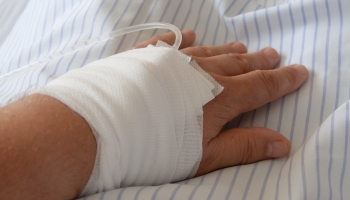Reading Time: 3 minutes
In 1966, The Rolling Stones released, “Mother’s Little Helper.” The popular song brought attention to a pill that had grown in popularity, Valium. Valium is the brand name for diazepam, the most popular benzodiazepine used to treat everything from general anxiety to alcohol withdrawal effects. However, when taken in large quantities, patients may end up seeking valium overdose treatment.
Effects of Valium
Simply put, Valium takes the edge off. Valium acts on the brain as a depressant. It offers sedating effects and is often used as a muscle relaxer and anticonvulsant in persons suffering from seizures. It is effective in helping patients feel a greater sense of ease and comfort.
Dependence and Addiction on Valium
Unfortunately, Valium is highly addictive and patients may develop a tolerance fairly quickly with extended use of the drug. Gradually, patients begin taking more and more to experience the same effects. What was once viewed as a “help” becomes a need to continue functioning.
Dangers of Drug Combinations

Emergency treatment for Valium overdose involves the administration of intravenous fluids.
For addicts, if one is good, two is better. An addict’s brain is constantly seeking the ultimate high. This can lead to combining drugs. Research shows that benzodiazepines and opioids are often used together, creating a recipe for polydrug abuse. The danger of combining drugs cannot be overstated.
Valium Overdose
Given the mental obsession, coupled with the physical dependence that goes hand-in-hand for regular Valium abusers, people can quickly teeter into dangerous territory. Seeking the ultimate high, greater relief and escape from the stark daily realities, people often take more and more Valium until they achieve a toxic level in the bloodstream. Because of the manner in which the drug acts upon the body’s systems, seeking treatment for benzodiazepine toxicity is critical for long term recovery.
Symptoms of Diazepam Toxicity
Taking too much Valium can be a recipe for falling to sleep and never waking up again. The drug decreases respirations and relaxes the muscles, including the heart, causing Valium abusers to slip easily into a coma. Overdose symptoms need not result in coma if patients recognize slighter toxicity signs and seek emergency treatment.
Emergency Treatment for Overdose
Emergency medical care personnel may employ the following therapies to aid patients in recovering from Valium overdose: intravenous fluids (IV), activated charcoal and stomach pumping. The goal in an overdose is to clear as much of the blood from the system before it is processed by the boy and makes its way into the blood. In serious overdoses, medical personnel will use a combination of therapies to save patients.
Prognosis
Physical recovery rates are fairly high in coming back from a diazepam overdose. As traumatic as the situation may be for the drug abuser and his/her family, and overdose can often be the wake-up call needed to admit utter defeat with regard to Valium addiction. Professionals are standing by to help.
